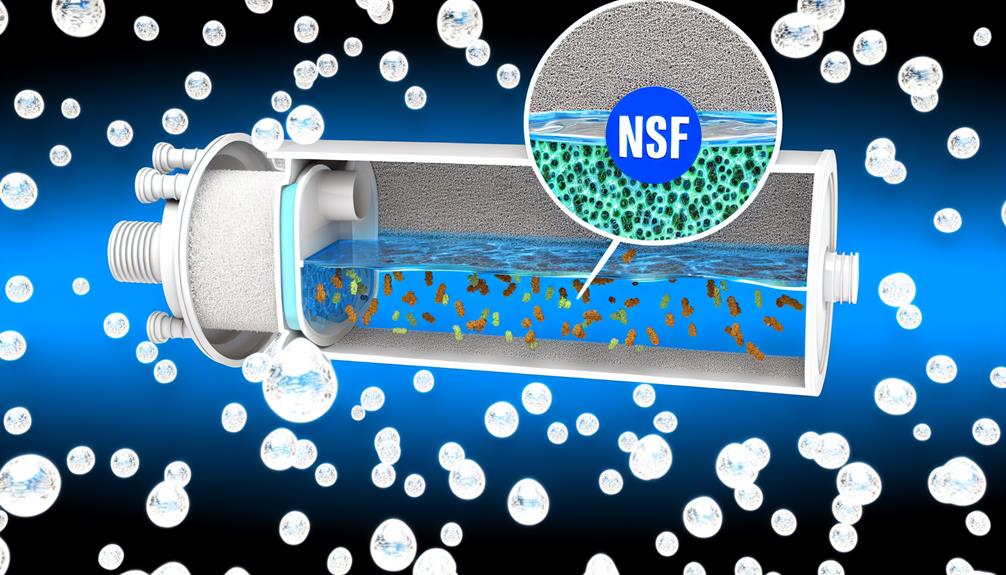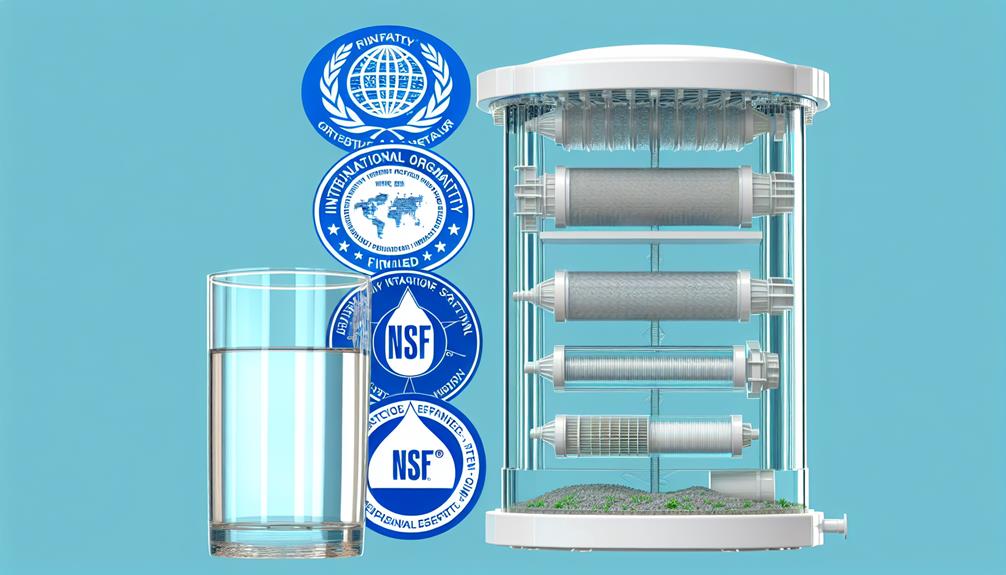Water is life's most essential compound, yet its purity can't be taken for granted; as you navigate the complexity of EU water filter compliance standards, it's clear that not all filters are created equal.
You're responsible for ensuring that the products you offer align with stringent regulations that protect consumers' health and the environment. The revised Drinking Water Directive introduces new benchmarks, and alongside it, the CE marking, REACH regulations, specific legislation on materials in contact with water, and various EN standards form a labyrinth of compliance checkpoints.
It's crucial to understand these components, not only to adhere to legal obligations but to maintain the trust of your consumers. As you consider the implications of these standards on your business, you'll find that navigating these waters is as much about embracing responsibility as it is about technical adherence.
Understanding CE Marking
To ensure your water filter meets EU standards, it's crucial to understand that CE marking signifies its compliance with European Union health, safety, and environmental protection legislation. The CE marking isn't just a formality; it's a declaration that your drinking water system has been thoroughly assessed and meets stringent criteria.
As a manufacturer, you bear the primary responsibility for ensuring that your water filtration products, including those employing reverse osmosis, are up to par. This means that the CE marking must be visibly and legibly affixed to your products, signifying that they're deemed safe for water quality and food contact.
When your drinking water filter carries the CE marking, it reassures customers that it's free from contaminants that could compromise health. It's important to note that while NSF certification is a widely recognized certification and testing organization, it isn't interchangeable with the CE marking. NSF certification is a voluntary standard in the EU, whereas CE marking is mandatory for products under certain European Directives and Regulations.
In essence, the CE marking is your passport for marketing your water filtration products across the European Economic Area. It reflects adherence to the highest standards for drinking water and is the result of a rigorous conformity assessment procedure, supported by comprehensive technical documentation.
Drinking Water Directive Parameters
Understanding the CE marking's role in certifying a water filter's safety and compliance, we now turn our focus to the specific parameters set out by the Revised European Drinking Water Directive, which dictate the quality standards that these filtration systems must meet. Your water filter must ensure compliance with precise criteria, reflecting the latest health and safety requirements.
Here are key parameters to consider:
- Microbiological Safety: The directive mandates strict limits on harmful bacteria and viruses, ensuring water is safe for consumption.
- Chemical Profiles: It specifies maximum allowable concentrations for toxic substances, such as lead and pesticides, that could compromise water quality.
- Indicator Parameters: These include turbidity and pH levels, signaling the overall condition and potability of the water.
- Disinfection Efficacy: Filters must demonstrate the ability to maintain effective disinfection, safeguarding against microbiological contamination.
In the vein of the United States Environmental Protection Agency's Safe Drinking Water Act, the directive establishes a framework comparable to NSF/ANSI Standard 61, applicable to water treatment products worldwide. Products certified to meet this standard assure you of their efficacy in the reduction of specific contaminants. Testing organizations for products grant certifications, verifying that performance claims, including reduction claims, are accurate and reliable.
Ensure that your selected water treatment solutions aren't only compliant but also certified to substantiate their performance claims.
REACH Regulation Compliance
When considering water filters for the European market, it's crucial to ensure they meet REACH regulations, which require detailed reporting and safe handling of chemicals used in their production. As a manufacturer or importer, you're responsible for registering substances if you produce or bring in 1 tonne or more per year. This process demands a rigorous assessment and management of risks, plus the obligation to communicate safety information throughout the supply chain.
Your compliance with REACH isn't just about ticking a box; it's about the thorough protection of human health and the environment from the potential harm caused by chemicals. This includes those used in water filters, such as substances that could lead to the formation of disinfection byproducts, or contaminants from a known quality water source.
Furthermore, you must be aware of certifications like NSF Standard 58 and Standard 61, which pertain to material safety testing for drinking water system components, including POU reverse osmosis systems. Achieving NSF certification ensures that the product manufacturer may incorporate materials that are safe and don't leach harmful substances into the water. It's a detailed, precise process that underscores your commitment to quality and safety in compliance with stringent EU standards.
Water Contact Materials Legislation
As you navigate the complexities of water filtration system production within the EU, it's essential to adhere to the Revised European Drinking Water Directive 2020/2184, which sets forth stringent standards for materials in contact with drinking water. Understanding the water contact materials legislation is critical for ensuring that your products comply with safety requirements.
Consider these key points:
- Material Safety: All materials used mustn't transfer substances to water in quantities that could pose a risk to human health.
- NSF/ANSI Standard 61: This standard typically applies to components in the U.S., but its influence extends globally, providing a framework for material safety.
- Material Extraction Testing: Testing conducted for municipal drinking water systems ensures that material extraction doesn't compromise water quality.
- Certification of POU (Point-of-Use) Reverse Osmosis Systems: Components certified to meet stringent standards demonstrate compliance with both health and aesthetic considerations.
In an analytical lens, the relation to material extraction is a focal point. Material extraction testing conducted under the EU directive aligns with the principles of NSF/ANSI Standard 61. While Standard 61 typically governs North American markets, its guidelines for testing and certifying products are internationally recognized benchmarks for water contact materials legislation.
EN Standards Certification
Securing EN Standards Certification is a critical step for water filter manufacturers to demonstrate their adherence to EU regulations and the efficacy of their products. As you navigate the water industry, it's imperative to understand that this certification is more than a mere formality; it's a rigorous process that assures public health by setting comprehensive standards for drinking water to protect consumers from contaminants.
When your water filters undergo third-party testing for EN standards certification, they're scrutinized for performance in eliminating chemical impurities, including disinfection byproducts, and any contaminants from a known source. This validation process provides unbiased results, ensuring that your point of use systems designed for Total Dissolved Solids (TDS) reduction meet the highest safety and quality benchmarks.
Moreover, the presence of the CE marking on your products signifies that they meet the requirements of European Directives and EN Standards for Water Treatment Equipment. This mark is crucial as it helps consumers make informed decisions, guaranteeing that the water filters they choose aren't only reliable but also sanctioned by the highest regulatory standards.
Keep in mind, maintaining compliance with EN standards isn't only beneficial for consumer trust but also fundamental for your product's marketability within the EU.

